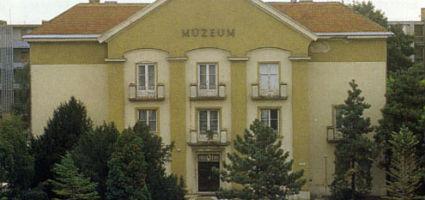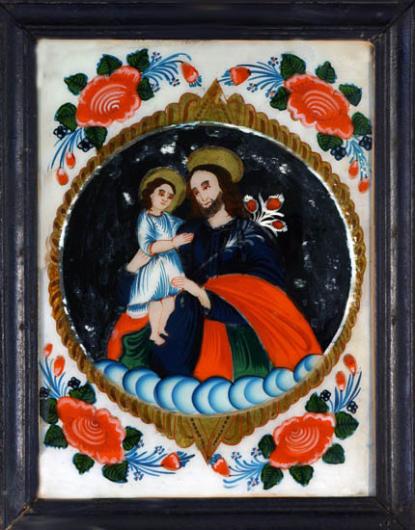2024. May 5. Sunday
Intercisa Museum - Dunaújváros
 |
Address: 2400, Dunaújváros Városháza tér 4.
Phone number: (25) 411-315
E-mail: intercisamuz@gmail.com
Opening hours: Tue-Sat 10-16
On the first Sunday in each month is open: 14-18 |
The exhibition has closed for visitors.
2005.11.25. - 2006.02.19.
Museum tickets, service costs:
|
Ticket for adults
|
700 HUF
|
|
|
Group ticket for adults
(from over 10 people)
|
700 HUF
|
|
|
Ticket for students
|
350 HUF
|
|
|
Group ticket for students
|
350 HUF
|
|
|
Ticket for pensioners
|
350 HUF
|
|
|
Group ticket for pensioners
|
350 HUF
|
|
|
Ticket for families
|
1400 HUF
|
/ family
|
Before Advent, a rich exhibition opens showing vernacular devotional pictures, objects in the Intercisa Museum on 25, November.

"Devotional object: The representation of Christ, Maria and the Saints. The pictures are believed to have unusual powers. The miracle of the larger pictures are connected to certain places." (Varga Zsuzsa: Ethn.,1974).
About using the glass pictures:
"As love present, the young religious couple gave the statue of the heart of Maria or Jesus to each other, sometimes a picture. Most of the time the boy gave the present to the girl. The pictures were bought in pairs and were put to the left or right of the Sacred Corner. At the time of the big cleaning of the house in winter or autumn the pictures were removed and put back while singing religious songs. For the Palóc these were the objects of individual devotion. In Mezőkövesd they were placed on the table at rosary meetings. A candle was mplaced in front of while prayers were said." /Szacsvay Éva: Glass picture/
The objects of our exhibition were selected from the collection of the Museum of Ethnography of Budapest by Szacsvay Éva, from the collection of the Laczkó Dezső Museum of Veszprém by Lackovits Emőke, the Dobó István CAstle Museum of Eger by Császi Irén. Private personae, Mrs Illyés Endre and Moskovszky Éva also lent their valuable objects.

"Devotional object: The representation of Christ, Maria and the Saints. The pictures are believed to have unusual powers. The miracle of the larger pictures are connected to certain places." (Varga Zsuzsa: Ethn.,1974).
About using the glass pictures:
"As love present, the young religious couple gave the statue of the heart of Maria or Jesus to each other, sometimes a picture. Most of the time the boy gave the present to the girl. The pictures were bought in pairs and were put to the left or right of the Sacred Corner. At the time of the big cleaning of the house in winter or autumn the pictures were removed and put back while singing religious songs. For the Palóc these were the objects of individual devotion. In Mezőkövesd they were placed on the table at rosary meetings. A candle was mplaced in front of while prayers were said." /Szacsvay Éva: Glass picture/
The objects of our exhibition were selected from the collection of the Museum of Ethnography of Budapest by Szacsvay Éva, from the collection of the Laczkó Dezső Museum of Veszprém by Lackovits Emőke, the Dobó István CAstle Museum of Eger by Császi Irén. Private personae, Mrs Illyés Endre and Moskovszky Éva also lent their valuable objects.
